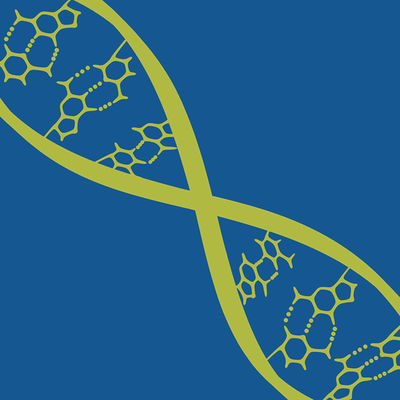预约演示
更新于:2025-05-07
Chronic lymphocytic leukaemia refractory
难治性慢性淋巴细胞白血病
更新于:2025-05-07
基本信息
别名 CLL, refractory、Chronic Lymphocytic Leukemia Refractory、Chronic lymphocytic leukaemia refractory + [13] |
简介 Chronic lymphocytic leukemia that is resistant to treatment. |
关联
126
项与 难治性慢性淋巴细胞白血病 相关的药物作用机制 BTK C481S抑制剂 |
原研机构 |
最高研发阶段批准上市 |
首次获批国家/地区 美国 |
首次获批日期2023-01-27 |
靶点 |
作用机制 CD20抑制剂 [+4] |
最高研发阶段批准上市 |
首次获批国家/地区 美国 |
首次获批日期2022-12-28 |
248
项与 难治性慢性淋巴细胞白血病 相关的临床试验NCT06735664
A Phase I Study of Covalent BTK Inhibitor Zanubrutinib in Combination With a CD3-CD20 Bispecific Antibody Odronextamab in Patients With Richter's Transformation
This phase I trial tests the safety and side effects of zanubrutinib in combination with odronextamab and how well it works in treating patients with Richter's transformation. Zanubrutinib, a tyrosine kinase inhibitor, blocks a protein called Bruton tyrosine kinase (BTK), which may help keep cancer cells from growing. Odronextamab is a bispecific monoclonal antibody that can bind to two different antigens at the same time. Odronextamab binds to CD20 found on B-cells (a type of white blood cell) and on many B-cell cancers and to CD3 on T-cells (also a type of white blood cell) and may interfere with the ability of cancer cells to grow and spread. Giving zanubrutinib in combination with odronextamab may be safe, tolerable and/or effective in treating patients with Richter's transformation.
开始日期2025-08-14 |
申办/合作机构 |
NCT06712810
MC220806: Phase I Study Evaluating the Efficacy of CSF1R and TAM Receptor or Inhibition in Hematologic Malignancies With Q702, a Small Molecular Inhibitor
This phase I trial tests the safety, side effects, and best dose of Q702 in treating patients with hematologic malignancies. Q702 is in a class of medications called immunomodulatory agents. It works by helping the immune system kill cancer cells and by helping the bone marrow to produce normal blood cells. Giving Q702 may be safe, tolerable and/or effective in treating patients with hematologic malignancies.
开始日期2025-06-15 |
申办/合作机构 |
NCT06839053
Escalated Inpatient Ramp-Up of Sonrotoclax in Patients With Chronic Lymphocytic Leukemia (CLL), Small Lymphocytic Lymphoma (SLL), and Mantle Cell Lymphoma (MCL)
This phase II trial studies the side effects of an escalated ramp-up of sonrotoclax following initial debulking with zanubrutinib or rituximab in treating patients with chronic lymphocytic leukemia (CLL), small lymphocytic lymphoma (SLL), and mantle cell lymphoma (MCL) that is newly diagnosed, has come back after a period of improvement (relapsed) or does not respond to treatment (refractory). Rituximab is a monoclonal antibody that binds to a protein called CD20, which is found on B-cells, and may kill tumor cells. Zanubrutinib may stop the growth of tumor cells by blocking a protein called Bruton's tyrosine kinase (BTK), which is needed for tumor cell growth. Sonrotoclax works by blocking a protein called B-cell lymphoma-2 (BCL-2). This protein helps certain types of blood tumor cells to survive and grow. When sonrotoclax blocks Bcl-2 it slows down or stops the growth of tumor cells and helps them die. Giving an increased dose of sonrotoclax over a shorter period of time in combination with zanubrutinib or rituximab may be safe and tolerable in treating patients with newly diagnosed, relapsed or refractory CLL, SLL, and MCL.
开始日期2025-06-01 |
申办/合作机构 |
100 项与 难治性慢性淋巴细胞白血病 相关的临床结果
登录后查看更多信息
100 项与 难治性慢性淋巴细胞白血病 相关的转化医学
登录后查看更多信息
0 项与 难治性慢性淋巴细胞白血病 相关的专利(医药)
登录后查看更多信息
516
项与 难治性慢性淋巴细胞白血病 相关的文献(医药)2025-04-01·Journal of Anesthesia
T2 high-signal-intensity zone of the spinal cord dorsal horn in patients treated with spinal cord stimulation for herpes zoster-associated pain: a retrospective case–control study
Article
作者: Arakawa, Kyosuke ; Nakagawa, Masayuki ; Morimatsu, Hiroshi ; Abe, Yoichiro
2025-02-01·International Journal of Hematology
Real-world effectiveness and safety of ibrutinib in patients with chronic lymphocytic leukemia in Japan: the Orbit study
Article
作者: Kameoka, Yoshihiro ; Aoki, Sadao ; Suzumiya, Junji ; Yamamoto, Go ; Kojima, Kensuke ; Tamura, Hideto ; Masamoto, Yosuke ; Kurahashi, Shingo ; Takahashi, Naoki ; Watanabe, Aki ; Toyama, Takanori ; Matsuki, Eri ; Kumode, Takahiro ; Muta, Tsuyoshi ; Aotsuka, Nobuyuki ; Isobe, Yasushi ; Ota, Shuichi ; Shibayama, Kazuhiro ; Takizawa, Jun ; Ozeki, Kazutaka ; Omi, Ai ; Nagai, Hirokazu ; Yoshimura, Takuro
2025-02-01·Annals of Hematology
Final results on effectiveness and safety of Ibrutinib in patients with chronic lymphocytic leukemia from the non-interventional FIRE study
Article
作者: Leblond, Véronique ; Malfuson, Jean-Valère ; Fleck, Emmanuel ; Hacini, Maya ; Bescond, Charles ; Cailleres, Sylvie ; Legouffe, Éric ; Feugier, Pierre ; El Yamani, Abderrazak ; Dupuis, Sandrine ; Le Calloch, Ronan ; Moldovan, Marius ; Le Gall, Stevan ; Kaphan, Régis ; Dilhuydy, Marie-Sarah ; Tournilhac, Olivier ; Labourey, Jean-Luc ; Molina, Lysiane ; Saad, Hussam ; Karsenti, Jean-Michel ; Quinquenel, Anne ; David, Selva ; Tardy, Stéphanie ; Lefrere, François ; Drenou, Bernard ; Fitoussi, Olivier ; Thannberger, Alexia ; Voillat, Laurent ; Bareau, Benoît ; Visanica, Sorin ; Leduc, Isabelle ; Gutnecht, Jean ; Bijou, Fontanet ; Cartron, Guillaume ; Dennetiere, Sophie ; Liu, Jixing ; Orfeuvre, Hubert ; Delette, Caroline ; Moullet, Isabelle ; Anglaret, Bruno ; Le Goff, Marielle ; Guidez, Stéphanie ; Bernard, Philippe ; Agape, Philippe ; Auger Quittet, Sophie ; Le Gouill, Steven ; Senecal, Delphine ; Costello, Régis ; Jourdan, Éric ; Boudin, Laurys ; Tchernonog, Emmanuelle ; Slama, Borhane ; Le Du, Katell ; Lepretre, Stéphane ; Peyrade, Frédéric ; Delaunay, Jacques ; Deslandes, Marine ; Roos-Weil, Damien ; Quittet, Philippe ; Calmettes, Claire ; Ysebaert, Loïc ; Fleury, Joël ; Re, Daniel ; Adiko, Didier ; Benbrahim, Omar ; Luttiau Motard, Carine ; Launay, Vincent ; Delmer, Alain ; Dartigeas, Caroline ; Saad, Alain ; Thieblemont, Catherine ; Roland, Virginie
94
项与 难治性慢性淋巴细胞白血病 相关的新闻(医药)2025-03-31
AstraZeneca’s Calquence (acalabrutinib) in combination with bendamustine and rituximab has been recommended for approval in the European Union (EU) for the treatment of adult patients with previously untreated mantle cell lymphoma (MCL) who are not eligible for autologous hematopoietic stem cell transplantation.
The Committee for Medicinal Products for Human Use (CHMP) of the European Medicines Agency (EMA) based its positive opinion on the results from the ECHO Phase III trial which were presented at the European Hematology Association 2024 Congress.
Results from the ECHO trial showed Calquence plus bendamustine and rituximab reduced the risk of disease progression or death by 27% compared to standard-of-care chemoimmunotherapy (hazard ratio [HR] 0.73; 95% confidence interval [CI] 0.57-0.94; p=0.016). Median progression-free survival (PFS) was 66.4 months for patients treated with the Calquence combination versus 49.6 with chemoimmunotherapy alone.
This recommendation for Calquence as a combination treatment in the 1st-line MCL setting follows the recent CHMP positive opinion for Calquence as a monotherapy for the treatment of adult patients with relapsed or refractory MCL.
Martin Dreyling, MD, Department of Medicine, University Hospital LMU Munich, and investigator in the trial, said: "Results from the pivotal ECHO trial demonstrated the significant benefits of the Calquence combination in managing this rare and aggressive cancer. Today’s recommendation is an important advance within the mantle cell lymphoma first-line treatment landscape, especially for older patients who need a balance of efficacy and tolerability.”
Susan Galbraith, Executive Vice President, Oncology Haematology R&D, AstraZeneca, said: “Today's positive recommendation from the CHMP further reinforces the potential of Calquence to advance first-line treatment options in mantle cell lymphoma, with the Calquence combination demonstrating an almost one and a half year improvement in progression-free survival in this setting. If approved, Calquence has the potential to transform the standard of care as the first BTK inhibitor approved for these patients in Europe.”
MCL is a rare and typically aggressive form of non-Hodgkin lymphoma, often diagnosed at an advanced stage.1,2 It is estimated that more than 6,000 patients were diagnosed with MCL in the UK, France, Germany, Spain and Italy in 2024.3
The safety and tolerability of Calquence was consistent with its known safety profile, and no new safety signals were identified.
Calquence plus bendamustine and rituximab is approved in the US and several other countries in this setting based on the ECHO results. Regulatory applications are currently under review in Japan and several other countries in this indication.
Notes
Mantle cell lymphoma (MCL) While MCL patients initially respond to treatment, patients do tend to relapse.4 MCL comprises about 3-6% of non-Hodgkin lymphomas, with an annual incidence of 0.5 per 100,000 population in Western countries; It is estimated that there are more than 21,000 patients diagnosed with MCL in the US, UK, France, Germany, Spain, Italy, Japan and China.3,4,5
ECHO ECHO is a randomised, double-blind, placebo-controlled, multi-centre Phase III trial evaluating the efficacy and safety of Calquence plus bendamustine and rituximab compared to SoC chemoimmunotherapy (bendamustine and rituximab) in adult patients at or over 65 years of age (n=635) with previously untreated MCL.6 Patients were randomised 1:1 to receive either Calquence or placebo administered orally twice per day, continuously, until disease progression or unacceptable toxicity. Additionally, all patients received six 28-day cycles of bendamustine on days 1 and 2 and rituximab on day 1 of each cycle, followed by rituximab maintenance for two years if patients achieved a response after induction therapy.6
The primary endpoint is PFS assessed by an Independent Review Committee; other efficacy endpoints include overall survival (OS), overall response rate (ORR), duration of response (DoR) and time to response (TTR).6 The trial was conducted in 27 countries across North and South America, Europe, Asia and Oceania.6
The ECHO trial enrolled patients from May 2017 to March 2023, continuing through the COVID-19 pandemic. Prespecified PFS and OS analyses censoring for COVID-19 deaths were conducted to assess the impact of COVID-19 on the study outcome in alignment with the FDA. Patients with blood cancer remain at a disproportionately high risk of severe outcomes from COVID-19, including hospitalisation and death compared to the general population.6,7,8
Calquence Calquence (acalabrutinib) is a second-generation, selective inhibitor of Bruton’s tyrosine kinase (BTK). Calquence binds covalently to BTK, thereby inhibiting its activity.8 In B-cells, BTK signalling results in activation of pathways necessary for B-cell proliferation, trafficking, chemotaxis and adhesion.
Calquence is approved for the treatment of chronic lymphocytic leukaemia (CLL) and small lymphocytic lymphoma (SLL) in the US and Japan, approved for CLL in the EU and many other countries worldwide and approved in China for relapsed or refractory CLL and SLL. Calquence is also approved for the treatment of adult patients with previously untreated MCL in the US and other countries. It is also approved for the treatment of adult patients with MCL who have received at least one prior therapy in the US, China and several other countries. Calquence is not currently approved for the treatment of MCL in Japan.
As part of an extensive clinical development programme, Calquence is currently being evaluated as a single treatment and in combination with standard-of-care chemoimmunotherapy for patients with multiple B-cell blood cancers, including CLL, MCL and diffuse large B-cell lymphoma.
AstraZeneca in haematology AstraZeneca is pushing the boundaries of science to redefine care in haematology. Our goal is to help transform the lives of patients living with malignant, rare and other related haematologic diseases through innovative medicines and approaches that are shaped by insights from patients, caregivers and physicians.
In addition to our marketed products, we are spearheading the development of novel therapies designed to target underlying drivers of disease across multiple scientific platforms. Our acquisitions of Alexion, with expertise in rare, non-malignant blood disorders, and Gracell Biotechnologies Inc., pioneers of autologous cell therapies, expand our haematology pipeline and enable us to reach more patients with high unmet needs through the end-to-end discovery, development and delivery of novel therapies.
AstraZeneca in oncology AstraZeneca is leading a revolution in oncology with the ambition to provide cures for cancer in every form, following the science to understand cancer and all its complexities to discover, develop and deliver life-changing medicines to patients.
The Company's focus is on some of the most challenging cancers. It is through persistent innovation that AstraZeneca has built one of the most diverse portfolios and pipelines in the industry, with the potential to catalyse changes in the practice of medicine and transform the patient experience.
AstraZeneca has the vision to redefine cancer care and, one day, eliminate cancer as a cause of death.
AstraZeneca AstraZeneca (LSE/STO/Nasdaq: AZN) is a global, science-led biopharmaceutical company that focuses on the discovery, development, and commercialisation of prescription medicines in Oncology, Rare Diseases, and BioPharmaceuticals, including Cardiovascular, Renal & Metabolism, and Respiratory & Immunology. Based in Cambridge, UK, AstraZeneca’s innovative medicines are sold in more than 125 countries and used by millions of patients worldwide. Please visit astrazeneca.com and follow the Company on Social Media @AstraZeneca.
Contacts For details on how to contact the Investor Relations Team, please click here. For Media contacts, click here.
References
Adrian Kemp Company Secretary AstraZeneca PLC
Oncology Corporate and financial
临床结果免疫疗法临床3期上市批准
2025-03-06
Eli Lilly’s Jaypirca (pirtobrutinib) has been recommended by the European Medicines Agency’s (EMA) human medicines committee to treat chronic lymphocytic leukaemia (CLL).
The Committee for Medicinal Products for Human Use (CHMP) has recommended that the drug be authorised for use in adults with relapsed or refractory CLL who have been previously treated with a Bruton’s tyrosine kinase (BTK) inhibitor.
Approximately 100,000 new cases of CLL, a form of slow-growing non-Hodgkin lymphoma that develops from white blood cells known as lymphocytes, are diagnosed globally every year.
Lilly’s Jaypirca is a reversible inhibitor of the BTK enzyme, which is a validated molecular target found across numerous B-cell leukaemias and lymphomas, including CLL.
The drug has already received a conditional marketing authorisation by the EMA to treat adults with relapsed or refractory mantle cell lymphoma who have been previously treated with a BTK inhibitor.
The CHMP’s new recommendation was supported by data from the phase 3 BRUIN CLL-321 trial, which met its primary endpoint of progression-free survival (PFS) and demonstrated that Jaypirca was superior to investigator’s choice of idelalisib plus rituximab (IdelaR) or bendamustine plus rituximab (BR), both global standards of care for CLL.
Results from an updated analysis last year showed that Jaypirca reduced the risk of disease progression or death by 46% compared to IdelaR or BR, consistent with the primary analysis, and this PFS benefit was consistent across key subgroups, including patients who received prior venetoclax.
Jacob Van Naarden, executive vice president and president of Lilly Oncology, said: “We are pleased to receive a positive opinion from the CHMP, signalling that the EU may lead the way in broadening patient access to Jaypirca for those with relapsed or refractory CLL in the post-BTK inhibitor setting.
“There are currently no treatment options that have been specifically studied in a randomised phase 3 trial in this patient population, and we are hopeful Jaypirca will be a meaningful new option for patients.”
The European Commission will now review the CHMP’s recommendation as it makes a decision on Jaypirca in this indication, expected in the next one to two months.
临床3期临床结果上市批准
2025-02-27
BeiGene fleshes out global ambition as Brukinsa surpasses AstraZeneca's Calquence in quarterly sales
BeiGene CEO John Oyler has his eyes on global CLL dominance as the company tries to minimize its association with—and reliance on—China amid geopolitical risks.
On BeiGene’s very first live earnings call, CEO and co-founder John Oyler on Thursday described a “once-in-a-lifetime opportunity.” To him, the company’s potential in chronic lymphocytic leukemia is akin to two other legendary Big Biotech stories—Gilead in HIV and Vertex in cystic fibrosis.Oyler may not be exaggerating.In a heated competition among BTK inhibitor treatments for blood cancer, BeiGene’s third-to-market Brukinsa has for the first time surpassed AstraZeneca’s Calquence in quarterly sales. In the fourth quarter of last year, Brukinsa doubled its sales year over year, generating $828 million and edging out Calquence’s $808 million during the same period.Brukinsa enjoyed the most new patient starts in the U.S. across indications within the BTK class, Oyler said on Thursday’s call.In their rivalry, AstraZeneca and BeiGene have been touting their products’ market leadership based on different metrics. At the same time, AbbVie and Johnson & Johnson’s once-dominant Imbruvica has been continuing its downfall.AZ, in its own fourth-quarter report, said Calquence maintained a leading share of U.S. new patient starts specifically in front-line chronic lymphocytic leukemia (CLL), which is the most important market for the BTK class. Matt Shaulis, BeiGene’s general manager of North America, said on Thursday’s call that Brukinsa has greater than 50% of U.S. new patient market share in all lines of CLL. Trying to shore up Calquence’s position, AZ recently proposed a fixed-duration combination compared with the drug’s existing continuous treatment regimen. The combo’s phase 3 trial was positive. But as he did during BeiGene’s J.P. Morgan Healthcare Conference presentation in January, Oyler on Thursday said that the AZ data “leave a lot to be desired.”He described the Calquence fixed-duration combo’s disappointing performance on minimal residual disease, which is a deep response measurement, as well a lackluster progression-free survival showing compared with historical data from other investigational cocktails. In addition, the BeiGene CEO drew attention to the regimen's “challenging safety profile during the first 60-week treatment period compared to Brukinsa.”“We strongly believe in the promise of fixed duration, but unfortunately, the current options don’t fulfill this promise,” Oyler said.In its own fixed-duration treatment bid, BeiGene is testing Brukinsa along with its BCL-2 inhibitor sonrotoclax in first-line CLL. The phase 3 Celestial TN CLL trial for that regimen has completed enrollment, according to Oyler.Sonrotoclax, which BeiGene is touting as a better option than AbbVie and Roche’s Venclexta, could read out phase 2 data in previously treated CLL and mantle cell lymphoma in the second half of this year to support potential accelerated approval submissions. BeiGene plans to start confirmatory phase 3 trials in those indications soon.BeiGene’s third asset in CLL, a BTK protein degrader coded BGB-16673, could read out potentially registrational phase 2 data in 2026.Again, going bold, BeiGene plans to start a phase 3 head-to-head trial for BGB-16673 against Eli Lilly’s noncovalent BTK inhibitor Jaypirca in relapsed or refractory CLL this year. Because of its unique mechanism, Jaypirca is the only BTK drug that can be used following treatment with covalent BTK inhibitors such as Brukinsa and Calquence. With BGB-16673, BeiGene clearly doesn’t intend to leave that second-line market to Lilly, either.Lilly has two phase 3 trials running for Jaypirca in first-line CLL. But BeiGene’s R&D head Lai Wang, Ph.D., argued that the two readouts likely won’t change adoption dynamics because their comparator arms don’t include “true standard of care” treatments such as Brukinsa.In short, BeiGene is working to build a “pre-eminent franchise” in the $12 billion-plus CLL market, Oyler said.Oyler has his eyes on global CLL dominance as BeiGene tries to minimize its association with—and reliance on—China amid rising geopolitical risks.Throughout Thursday’s one-hour call, the word “China” was only uttered three times, all when newly hired BeiGene CFO Aaron Rosenberg described the company’s leading market share in the country for Brukinsa and the PD-1 inhibitor Tevimbra. The dropoff in the China discussion is remarkable considering the country contributed the majority of BeiGene’s revenue up till 2022. Last year, the U.S. made up 51.4% of BeiGene’s total annual revenue of $3.8 billion, compared with 37% from China. In 2023, the numbers were nearly even at 45.9% and 44.8%, respectively.Thursday’s investor call marks part of BeiGene’s progress toward becoming a global company, alongside its new U.S. biologics innovation center, a proposed name change to BeOne Medicines and its move to redomicile to Switzerland.BeiGene expects it will break even under GAAP measurements and generate positive cash flow from its operations starting in 2025. In 2024, the company narrowed its loss to $79.4 million from $384 million the prior year.The company expects full-year revenue to come in a range between $4.9 billion and $5.3 billion this year based on the continued global expansion of Brukinsa.

临床3期
分析
对领域进行一次全面的分析。
登录
或

生物医药百科问答
全新生物医药AI Agent 覆盖科研全链路,让突破性发现快人一步
立即开始免费试用!
智慧芽新药情报库是智慧芽专为生命科学人士构建的基于AI的创新药情报平台,助您全方位提升您的研发与决策效率。
立即开始数据试用!
智慧芽新药库数据也通过智慧芽数据服务平台,以API或者数据包形式对外开放,助您更加充分利用智慧芽新药情报信息。
生物序列数据库
生物药研发创新
免费使用
化学结构数据库
小分子化药研发创新
免费使用







